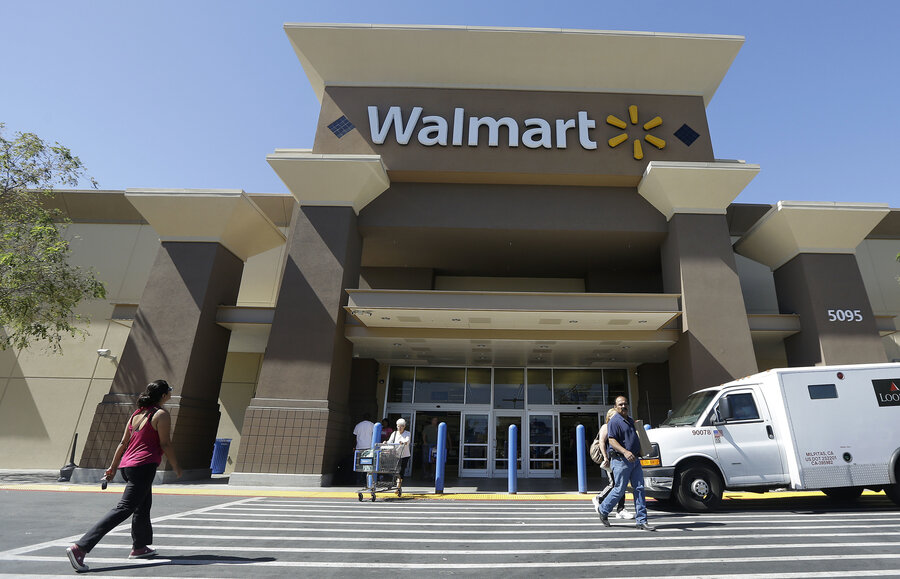Why Wal-Mart is selling cars
Loading...
In its quest to become America's one-stop-shopping center, Wal-Mart is adding cars to its seemingly endless array of retail offerings.
Wal-Mart Stores, Inc. is teaming-up with CarSaver – an online automotive retail platform – to set up car kiosks at retail locations.
The program, which is set to launch by April 1, will be offered at 25 Walmart Supercenters in four markets; Houston, Dallas, Phoenix, and Oklahoma City, according to Automotive News.
Intended to alleviate some of the stress and pressure of car shopping, by tapping into CarSaver's existing online system, the new kiosks will allow customers to browse vehicle availability, apply for financing, and even set up insurance before meeting with a local car dealer.
CarSaver is establishing partnerships with AutoNation Inc. the largest new-vehicle retailer in the country and working with Ally Financial for automotive lending for the program. The partnerships will enable Wal-Mart kiosk customers to find a dealer within 15 miles of their location and have financing options determined on the spot before even leaving the store, according to CarSaver.
CarSaver was founded in Miami in 2012 by Sean Wolfington and Chad Collier, both of whom had been involved with dealerships and saw difficulties for both dealers and consumers in the traditional car buying process.
“Before I sold my dealerships, I noticed that the leads we bought were also sold to 10 to 15 other dealers, and this hurt our conversion rate and the customer experience because consumers were bombarded by multiple dealers' emails and calls," Collier told Automotive News. "That is also why we deliver appointments rather than leads.”
Upon making a sale, the dealership then pays a $350 fee to CarSaver; a fee only paid out following a successful transaction.
CarSaver and Wal-Mart launched a pilot of the program in April 2016 in Stuart, Fla., in partnership with 20 area dealerships.
At the pilot location, more than half of the appointments set up through the kiosk have led to successful sales and saved customers an average $3,000 off the initial price, Mr. Wolfington told Automotive News.
Wolfington, who has experience running a similar program at Costco, says this is the correct way to sell cars, “with a fair, transparent price, presented by brands the customer trusts most.”
The Costco automotive sales program has grown considerably in the past several years. According to numbers cited by Fortune, 465,000 cars were sold through Costco’s program, compared to 250,000 sold through Costco in 2010.
"The Costco Auto Program benefits Costco and Costco members by bringing value to the Costco membership and driving new memberships," a Costco Auto Program spokesperson told Fortune.
While such systems seem convenient in that they offer no-haggle pricing and save money off the sticker value, not everyone believes that Costco or Wal-Mart kiosks are actually the best way for consumers to purchase vehicles.
“The best method is to avoid the middleman altogether,” Tom McParland wrote for Jalopnik, an automotive news site of Gawker Media. “Get pre-approved for financing from your credit union or local bank. They aren’t interested in selling you a car, but it is in their interest to get you the lowest rate they can offer. You can either take that loan or use it as leverage later. Then contact the dealers yourself and get numbers fully detailed in writing.”
Mr. McParland suggests that the $3,000 averaged off the sticker price by CarSaver and Wal-Mart isn’t an accurate representation of whether or not the sales were good deals and that the $350 success fee will end up being factored into the sale price by the dealer.
“You might save $3,000 off the sticker, but is that really the best deal possible for the particular car you are shopping for? The only way to find out is to get multiple quotes from multiple dealers on the same make, model, and trim.”
That takes some leg work on the part of the buyer, however. Programs like Costco and Wal-Mart are hoping that consumers will be enticed by the convenience of the one-stop shopping experience.








